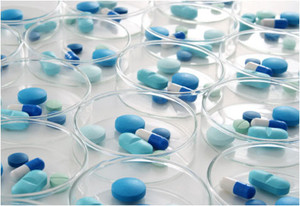19 May 2017 marked the end of the comment period on the US Food and Drug Administration’s (FDA) guidance on the interchangeability of biosimilars with their reference biologicals [1].
Comments on extrapolation in FDA’s interchangeability guidance from big pharma
Home/Guidelines
|
Posted 16/06/2017
 0
Post your comment
0
Post your comment

The agency received 52 comments on the draft guidance, which was first released in January 2017 [2]. Many of these comments came from big pharma companies, including AbbVie, Amgen, Boehringer Ingelheim, Genentech, Johnson & Johnson, Pfizer, Merck, Sandoz and more.
Many comments concentrated on the issues of switching studies and FDA’s requirements for interchangeability. But other issues raised included naming and labelling, definitions, extrapolation and exclusivity. This article covers comments on extrapolation, immunogenicity, different presentations, definitions and exclusivity.
1. Extrapolation
On the subject of extrapolation, Sandoz stated that‘extrapolation is based on molecular “sameness” and applies to interchangeable biologic[al]s in the same manner as it does to biosimilars’. The company endorsed the agency’s position that ‘the concept of extrapolation is applicable to interchangeable biologic[al]s’. Adding that it expected that an interchangeable biological would ‘be designated as interchangeable for all the indications for which it is already approved and labelled as biosimilar’.
Pfizer argues that ‘the statutory requirement that the biological product can be expected to produce the same clinical result as the reference product in any given patient has not been met if a biosimilar sponsor were unable to scientifically support extrapolation of clinical data across each condition of use for which the reference product is licensed’. The company suggests that ‘the Draft Guidance be updated to clarify that a sponsor should provide sufficient data or scientific justification for extrapolating data to support a determination of interchangeability for each condition of use for which the reference product is licensed at the time of the designation request, regardless of whether it seeks licensure as a proposed interchangeable product for fewer than all conditions of use for which the reference product is licensed’.
2. Immunogenicity
With respect to immunogenicity of biosimilars, Sandoz said that ‘immunogenicity is at present a hypothetical concern that is not supported by existing data’. They added that ‘to date there is no existing data documenting these concerns. This includes extensive use of marketed biosimilars for the past decade in the EU’.
3. Presentations
Johnson & Johnson said that ‘reference biologic[al]s are often associated with specific presentations including lyo- or liquid-in-vials for intravenous administration and a wide variety of delivery systems (e.g. auto-injectors, pen injectors, prefilled syringes) intended for subcutaneous administration by HCPs or patients at home’. Therefore, it believes that ‘the mix of presentations and their use environments raise significant questions about interchangeability’.
Pfizer also has concerns about different presentations, commenting that it had ‘concerns over the proposal for non-inferiority (NI) two-way comparative human factors studies to assess any differences that may not be minor in the design of the presentation of the proposed interchangeable product’. They add that ‘behaviors contribute to errors. Moreover, in order to have a subjective and objective assessment of data, potentially large sample sizes will be required to detect differences in the use errors’. Pfizer therefore recommends that ‘labeling should clearly indicate if the device differs from the reference product device’.
4. Definitions
For Merck, comments included a request for better interpretation of definitions. For example, they wanted to know ‘what the statutory term “standards” means, in reference to what requirements a biosimilar must meet to receive a determination of interchangeability’. They added that ‘the word “standards” in this context could be interpreted to mean something more than the evidentiary standards for pharmaceuticals of safety, efficacy, and quality, and thus lead one to conclude that an interchangeable biosimilar is “better” than a biosimilar that does not have the interchangeability claim’.
5. Exclusivity
Merck noted that ‘FDA’s draft guidance does not mention anything about exclusivity for the first interchangeable product to a reference product’ and asked the agency to address this omission.
Related articles
Physician associations comment on FDA’s interchangeability guidance
Comments on switching in FDA’s interchangeability guidance from Big Pharma
Big Pharma comments on FDA’s interchangeability guidance
Comments on FDA’s interchangeability guidance
References
1. GaBI Online - Generics and Biosimilars Initiative. FDA extends comment period for interchangeability guidance [www.gabionline.net]. Mol, Belgium: Pro Pharma Communications International; [cited 2017 Jun 16]. Available from: www.gabionline.net/Guidelines/FDA-extends-comment-period-for-interchangeability-guidance
2. GaBI Online - Generics and Biosimilars Initiative. FDA issues draft guidance on biosimilar interchangeability [www.gabionline.net]. Mol, Belgium: Pro Pharma Communications International; [cited 2017 Jun 16]. Available from: www.gabionline.net/Guidelines/FDA-issues-draft-guidance-on-biosimilar-interchangeability
Permission granted to reproduce for personal and non-commercial use only. All other reproduction, copy or reprinting of all or part of any ‘Content’ found on this website is strictly prohibited without the prior consent of the publisher. Contact the publisher to obtain permission before redistributing.
Copyright – Unless otherwise stated all contents of this website are © 2017 Pro Pharma Communications International. All Rights Reserved.
Policies & Legislation
Argentina streamlines drug approval process
ANVISA tackles 24-month backlog in biologicals post-registration petitions
Most viewed articles
The best selling biotechnology drugs of 2008: the next biosimilars targets
Global biosimilars guideline development – EGA’s perspective
New guidance for biologicals in Pakistan and Hong Kong’s independent drug regulatory authority

Home/Guidelines Posted 20/10/2025
Canada poised to remove requirement for Phase III trials for biosimilars

Home/Guidelines Posted 22/07/2025
The best selling biotechnology drugs of 2008: the next biosimilars targets








Post your comment